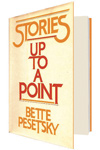Among the several titles that Gordon Lish has held over the course of his long career (teacher, author, editor, publisher), he is perhaps best known for his nearly twenty years as a fiction editor at Alfred A. Knopf. He worked on everything from Don DeLillo to David Leavitt, Cynthia Ozick to Walter Kirn. A striking number of the books he edited were story collections by women, many of them debuts: Christine Schutt’s Nightwork, Dawn Raffel’s In the Year of Long Division, Amy Hempel’s Reasons to Live, Noy Holland’s The Spectacle of the Body, Diane Williams’s The Stupefaction, Mary Robison’s Believe Them, Yannick Murphy’s Stories in Another Language, Jennifer Allen’s Better Get Your Angel On, Janet Kauffman’s Obscene Gestures for Women. (All but the Williams, Kauffman, and Robison were first books.)
Lish has a well-earned reputation as the champion of certain aesthetic principles: repetition, minimalism, radical confession, and an acoustical/structural approach to the sentence that (as Gary Lutz has reported in this magazine) he calls “consecution” (“The Sentence Is a Lonely Place,” January 2009). Nonetheless, it is difficult—and in a certain sense pernicious—to try to generalize about these books. There’s kinship between them, sure, but similarity is a long way off from uniformity; Lish’s methods have never been half so codified or rigid as his detractors have insisted they are. (If you can’t see the difference between Amy Hempel and Gary Lutz, or Mary Robison and Harold Brodkey, you’re on your own.) For those of us partial—even partisan—to this thing that it is neither precise nor fair to call the “Lish style,” the large and variegated back catalog is a deep, wide ocean in which to dive for treasure and pearls.
Let me share with you just one fine find from my expeditions: Stories Up to a Point by Bette Pesetsky. First published in 1981, Stories was Pesetsky’s first book. The narratives—fifteen of them, in a book that runs only 114 pages—are almost all in the first person, and deliver “the fragmented news of combat recollected by women whose lives have been tested against the action of time and loss and betrayal.” That’s from the jacket copy, which I’d bet my last dollar Lish wrote himself. He leaves out one major characteristic of the book—which is that it’s funny as hell—but Francine du...
You have reached your article limit
Sign up for a digital subscription and continue reading all new issues, plus our entire archives, for just $1.50/month.
Already a subscriber? Sign in





